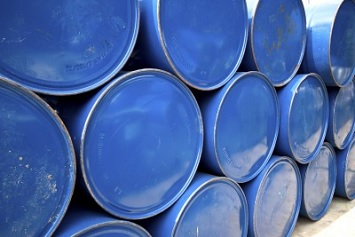An understanding of the Resource Conservation and Recovery Act (RCRA) term speculative accumulation is essential for managers overseeing compliance with regulations governing the generation of both hazardous waste and hazardous secondary materials (HSMs).

HSMs enjoy a regulatory exclusion from the definition of solid waste and RCRA Subtitle C regulations as long as they meet the EPA’s criteria for legitimate recycling and are not speculatively accumulated. The Agency first gave form to its understanding of speculative accumulation in its 1985 Definition of Solid Waste (DSW) rule. The EPA wrote:
“Speculative accumulation … involves either accumulating wastes that are potentially recyclable, but for which no recycling market (or no feasible recycling market) exists, or accumulating wastes before recycling unless 75 percent of the accumulated material is recycled during a one-year period.”
The 75 percent in 1 year requirement applies to the HSMs that were accumulated as of January 1 of that year.
The Agency’s most recent expansion of that description was included in its 2015 regulatory amendments to the DSW rule. The amendments include a new requirement to place a label on the HSM storage unit indicating the first day the material began to be accumulated. The intent here is to provide some assurance to inspectors that the accumulation time limit is not violated. The rule adds that if placing a label on the storage unit is not practicable, the accumulation period must be documented through an inventory log or other appropriate method. The Agency does not define other appropriate method; however, the term is intended to address conditions in which HSMs are continuously recycled without prior storage.
1985 Rule
Returning to the 1985 rule, the EPA made the following still applicable points about speculative accumulation:
- The HSMs must have a “known potential for recycling,” or they will be considered wastes immediately.
- HSMs for which generators could demonstrate that ongoing developmental work will lead to recycling at a future date are accumulated speculatively. Materials that are not known to be recyclable (or not feasibly recyclable in the hands of a particular generator) are wastes immediately.
- By requiring persons accumulating the materials to show that they are recycling sufficient amounts, the Agency said it means that they have the burden of proof on this issue. Accumulators can satisfy the burden of proof by having on hand:
- The amount of HSM in each class recycled in the same way at the beginning of the 1-year period (The 1 year beginning January 1 is a calendar year, not a fiscal year or an inventory year.)
- The amount of such material added during the 1-year period
- The amount remaining at the end of the 1-year period
- Records of throughput in an industrial process should be satisfactory proof that the HSMs are being legitimately recycled. For materials used as intermediates in closed-loop processes, records of consistent historical use should be sufficient.
- The names and addresses of recyclers receiving the HSM should be maintained, as well as any other information that substantiates the minimum turnover rate (e.g., contracts or correspondence with a recycler). In the 2015 rule, the Agency added a recordkeeping requirement for reclamation conducted under toll manufacturing agreements. The EPA does not require that specific reports be submitted to the Agency.
- The 75 percent turnover rate may be calculated based on either volume or weight.
- The speculative accumulation prohibition applies to HSM generators and reclaimers.
- Regulations governing the HSM exclusion from the definition of a solid waste do not apply at transfer facilities as long as the HSM is not stored at the facility for more than 10 days. During this period, the HSM must be packaged according to applicable Department of Transportation regulations. Transfer facilities are loading docks, parking areas, storage areas, and similar areas where shipments of HSMs are held during the normal course of transportation.
- Materials that are managed as hazardous waste do not count toward speculative accumulation limits but would count toward the monthly total used to determine a facility’s hazardous waste generator status.
Additional Points
In a more recent FAQ applicable to cathode-ray tubes, the EPA provides additional information about speculative accumulation.
- The burden of proof may need to include information about the recycling technology and relative costs associated with recycling.
- HSMs not recycled during the calendar year count toward the total inventory for the purpose of speculative accumulation calculations for the following calendar year.
- Moving the HSMs from one site to another site for purposes of storing at that second site would not reset the calculation for speculative accumulation. In other words, the HSM stored at the second site would still be subject to the same speculative accumulation period that began at the first site. Also, at the second storage site, the HSM continues to be subject to the requirement that the person accumulating the material show that the material is potentially recyclable and has a feasible means of being recycled.
